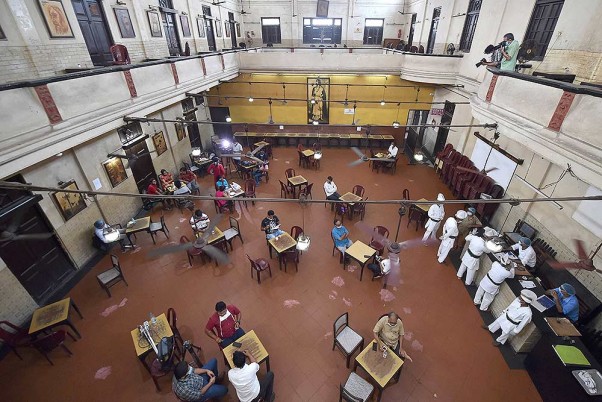
Study reveals airborne spread of COVID-19 in enclosed spaces
Multiple modes of transmission of the novel coronavirus have been observed so far, but it has raised the question of whether it transmits in enclosed spaces.

Multiple modes of transmission of the novel coronavirus have been observed so far, but it has raised the question of whether the virus can be transmitted in enclosed spaces. A recently published study by the University of Georgia has found sound evidence for airborne transmission of COVID-19 in enclosed spaces too.
“The possibility of airborne transmission has long been suspected, but with limited empirical evidence. Our study provided epidemiologic evidence of transmission over long distances, which was likely airborne,” said Ye Shen, Associate Professor, Epidemiology and Biostatistics at the University of Georgia’s College of Public Health and lead author of the study.
“It was largely believed that close contact through droplets is a major route of transmission for COVID-19. However, the widely adopted physical distancing and hand washing did not effectively prevent transmission globally. Instead, the number of new COVID-19 cases increased steadily,” observed Shen.
The researchers worked out a natural experiment with the people who were going to attend an outdoor worship event. They divided them into two groups and took two buses to reach the event venue. Both buses had closed windows and had the air conditioning running but one bus carried a patient infected with the virus, and the other did not.
Of the passengers who later got sick, the majority of them rode on the same bus as the source patient. Even though the two groups later mixed in with the larger crowd at the worship event, the number of new cases attributed to the event was much lower. This clearly indicates that the bus was the major point of transmission. Furthermore, some of the bus passengers who later showed symptoms of COVID-19, the authors found, were not sitting close to the infected passenger.
These findings highlight scenarios where COVID-19 could be spread through fine aerosol particles being circulated in an enclosed space, and as the weather turns colder.
“Understanding the transmission routes of COVID-19 is critical to contain the pandemic so that effective prevention strategies can be developed targeting all potential transmission routes. The findings provide solid support for wearing face coverings in enclosed environments with poor ventilation,” said Shen.
The study has been recently published in JAMA Internal Medicine.
(With inputs from India Science Wire)


